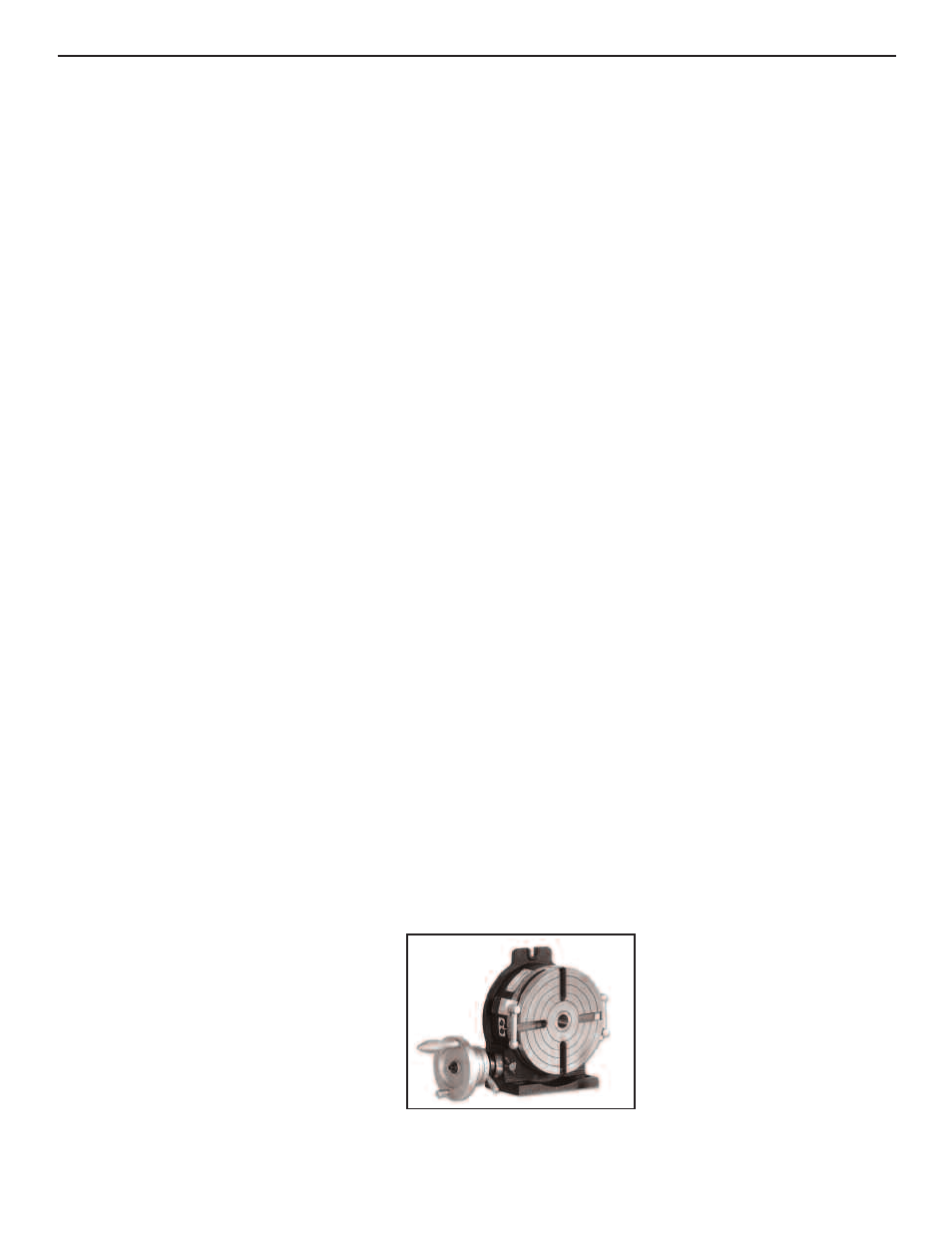Dividing heads, Rotary tables – Smithy Midas 1220 LTD User Manual
Page 93

Using special fixtures. Clamp both workpiece and fixture securely in place. Be sure they
are clean. Watch them carefully during machining; a loose fixture or workpiece can be
disastrous.
Dividing Heads
Also called indexing heads, dividing heads attach to the table to hold workpieces between
centers for machining surfaces, grooves, or gear teeth at precise distances apart.
The main parts of a dividing head are its head and tailstock. The tailstock holds the outer
end of the workpiece. The head is more complex. When you turn its handle, a spindle
rotates through a precisely machined gearing system. A chuck can attach to the spindle
face, which is set at 90° to the handle (Figure 18.2). An indexing plate is set in from the
handle. By counting how many turns of the handle it takes to turn the workpiece a
certain number of degrees, you can make cuts at different angles. This is how to cut
gears.
Figure 18.2 Dividing head set up (Missing)
Rotary Tables
A rotary table is a precision worm and wheel unit that lets you cut gears, precision holes,
and curved slots. Rotary tables mount vertically or horizontally to the table. T-slots secure
the work piece. A typical rotary table is graduated in degrees and fractions.
The index plate in the rotary table has several circles of equally spaced holes into which
the index crankpin fits. Although the hole circles are spaced equally, the number of holes
varies in different circles, so you can get many different numbers of circumference
divisions. You can buy sets of index plates for even more circumference divisions. Contact
a Smithy technician for more information.
Figure 18.3 Rotary tables let you cut gears, precision holes, and curved slots.
NO IMAGE. NO AVAILABLE ACCESSORY FOR SET-UP.
18: Workholding
18-2
Or Visit www.smithy.com